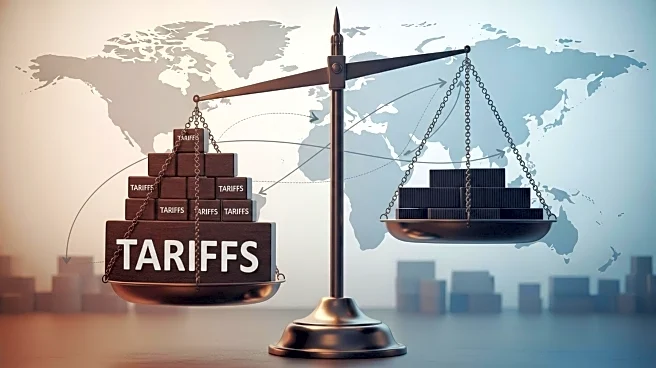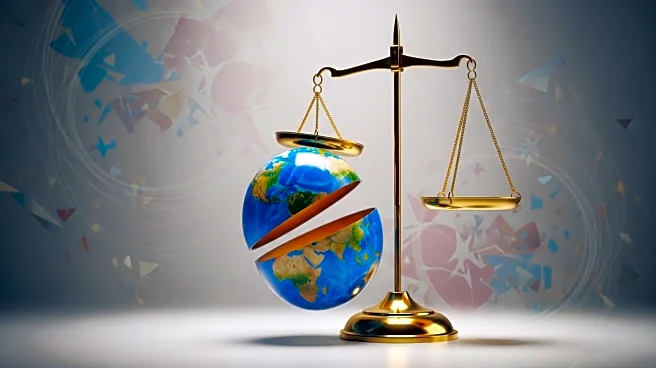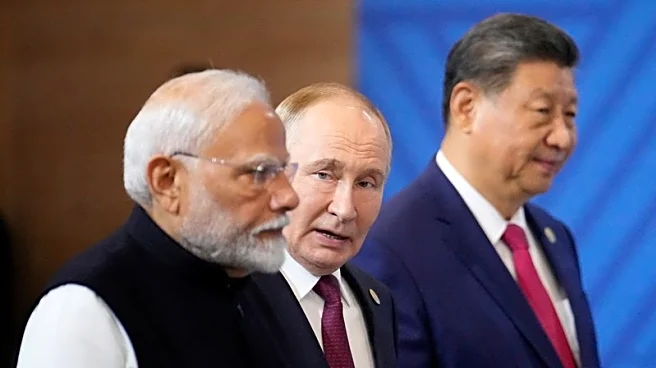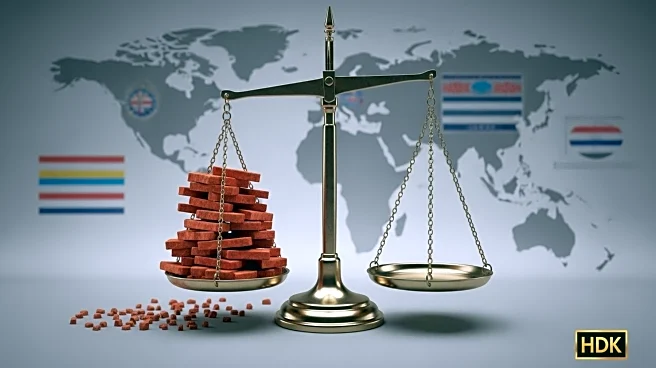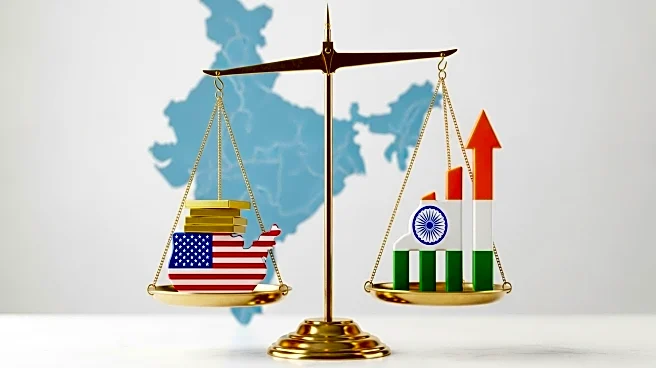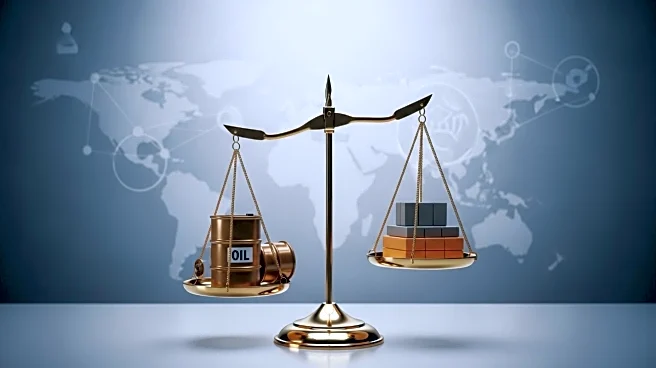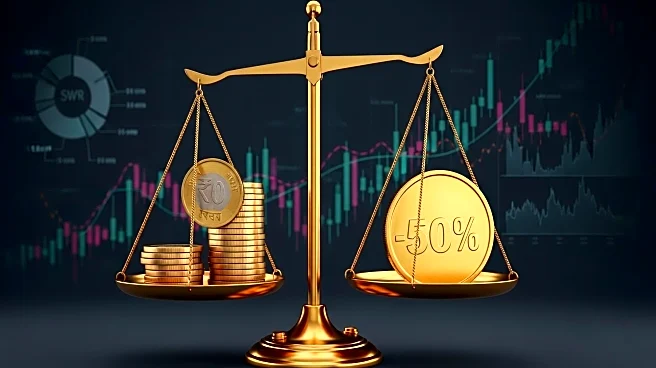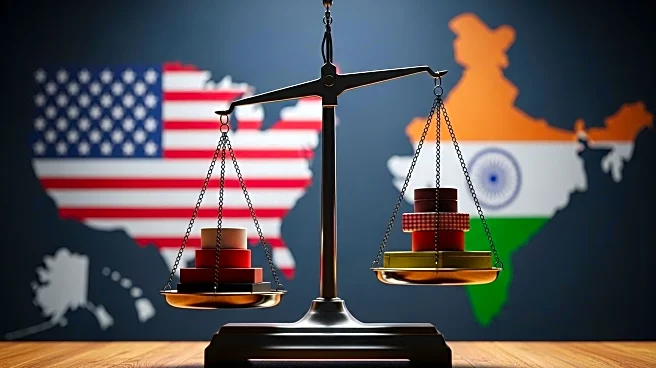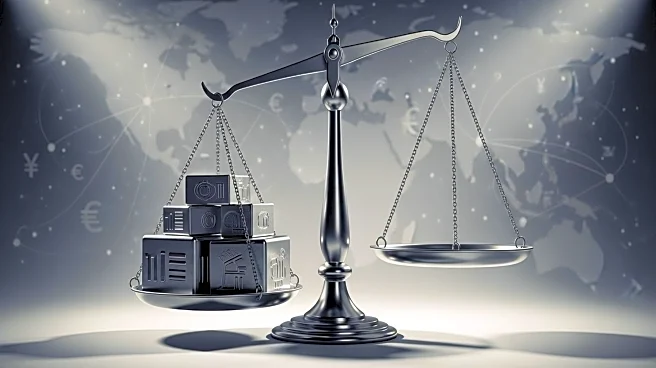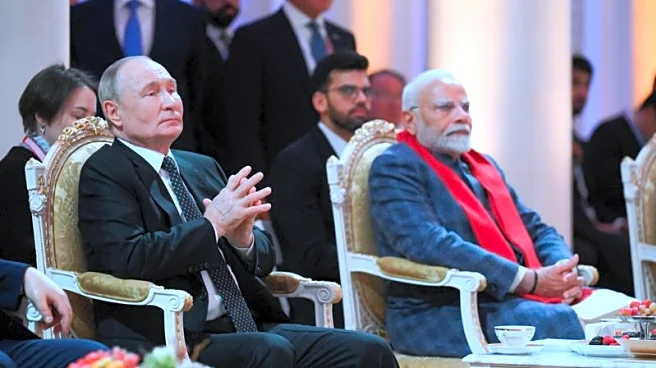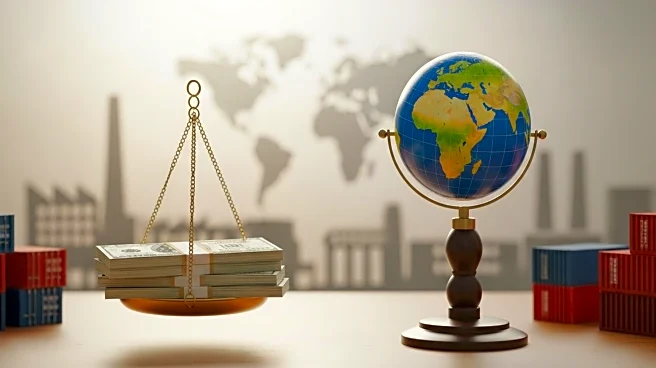What is the story about?
What's Happening?
President Trump has imposed a 50 percent tariff on Indian goods, doubling the previous levy of 25 percent. This action is in response to India's purchase of Russian oil, which the U.S. claims is financing Russia's war in Ukraine. The tariffs are expected to severely impact India's export-driven sectors, including textiles, gems, jewelry, carpets, and shrimp. Anuj Gupta, an exporter of garment accessories, reports that the tariffs have brought his business to a standstill, with fears that customers may seek alternative markets. The Federation of Indian Export Organisation is seeking government support to mitigate the impact, but the situation remains dire for many businesses.
Why It's Important?
The tariffs could have a devastating effect on India's economy, particularly in sectors heavily reliant on exports to the U.S. Hundreds of thousands of jobs are at risk, with shrimp and garment industries among the hardest hit. The tariffs may benefit competitors like Vietnam, Bangladesh, and China, which face lower tariffs. Moody's Ratings warns that the tariffs could slow India's economic growth and hinder its manufacturing sector ambitions. The broader implications include strained U.S.-India relations and potential shifts in global trade dynamics.
What's Next?
India's government, led by Prime Minister Narendra Modi, is expected to take measures to support affected industries, possibly including an economic package. However, the long-term resolution of trade tensions remains uncertain. Exporters are preparing reports for the government, hoping for schemes to prevent layoffs. The situation may lead to increased efforts by India to become self-reliant, as indicated by Modi's recent speeches. The ongoing trade war could further complicate diplomatic relations between the two nations.
Beyond the Headlines
The tariffs highlight the geopolitical complexities of global trade, with ethical considerations regarding economic sanctions and their impact on civilian livelihoods. The situation underscores the challenges of balancing national interests with international diplomacy. Long-term shifts may include changes in supply chain strategies and increased focus on domestic markets.
AI Generated Content
Do you find this article useful?


